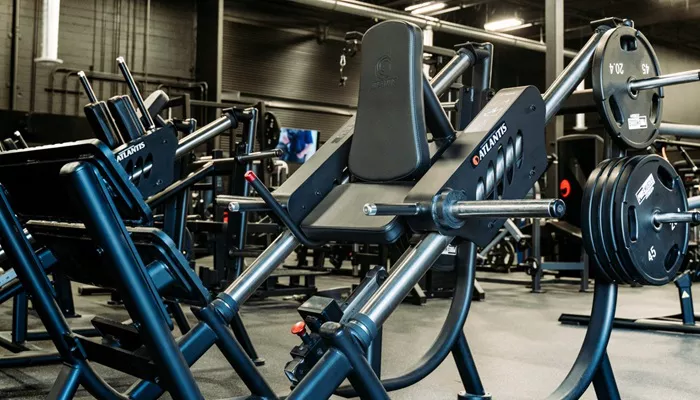The global fitness equipment market is experiencing robust growth, driven by shifting lifestyles, increased health awareness, and the expanding presence of fitness centers. More people around the world are recognizing the dangers of lifestyle-related diseases such as obesity, heart conditions, and diabetes. This growing awareness, combined with the rapid spread of gym chains, home workout options, and wellness apps, is boosting demand for fitness equipment.
As service providers roll out attractive fitness and weight loss packages, the need for advanced workout machines is steadily increasing. A rising global burden of cardiovascular diseases has further fueled market momentum. Preventive healthcare is gaining popularity, with many consumers now investing in high-quality fitness gear for both home and gym use.
North America Leads, Asia Pacific Gains Momentum
North America currently holds the largest share of the fitness equipment market, closely followed by Europe. Together, these regions account for about 60% of the global market, supported by widespread fitness awareness and strong wellness infrastructure. However, Asia Pacific is projected to see the fastest growth through 2030. Countries like China and India are experiencing rising incomes, rapid urban development, and increased interest in health, all contributing to rising regional demand.
Cardiovascular training machines, such as treadmills and stationary bikes, remain the top-selling equipment category. These are popular due to their proven benefits for weight loss and heart health.
Key Report Highlights
North America and Europe represent nearly 60% of the global market.
Treadmills and bikes dominate the cardiovascular equipment segment.
Asia Pacific is the fastest-growing region in the forecast period.
Home-use fitness equipment demand surged after the COVID-19 pandemic.
Rising rates of obesity and chronic illnesses are driving market growth.
Online retail is becoming a key sales channel for fitness gear.
Market Segmentation Overview
The market is categorized by application, end use, distribution channel, and region.
By application, the market splits into cardiovascular and weight training equipment. Cardio machines include treadmills, ellipticals, stair climbers, stationary bikes, and ski simulators—popular for their role in managing heart health and body weight. Weight training products such as bars, dumbbells, benches, and lifting machines cater to strength and muscle development.
By end user, the market divides into home users, health clubs, and others. Home fitness has grown significantly, especially post-pandemic, as more consumers opt for the convenience of exercising at home.
In terms of distribution, fitness equipment is sold through both direct and indirect channels. Indirect methods include hypermarkets, specialty stores, sports outlets, online platforms, and multi-brand retailers, providing consumers with diverse buying options.
Regional Insights
North America dominates the market due to a well-established fitness culture, a strong healthcare system, and the presence of top market players. The region is also witnessing rising obesity rates, which are prompting more investments in fitness centers and health clubs.
Europe follows closely behind, with countries like Germany, the UK, and France showing rising demand for fitness products amid a growing number of gym chains.
Meanwhile, Asia Pacific is emerging as the fastest-growing market. Urbanization, an expanding middle class, and growing youth interest in fitness are key factors. Countries such as China, Japan, India, and South Korea are seeing a boom in new gyms and wellness centers. In South and East Asia, fitness culture is being further supported by government-led health initiatives.
Market Drivers
One of the main drivers of market growth is increasing public knowledge about the benefits of regular exercise in preventing conditions like diabetes, high blood pressure, heart disease, and obesity. As more people adopt active lifestyles, demand for both commercial and home-based fitness equipment continues to rise.
The spread of digital fitness tools, including apps and virtual training platforms, is making it easier to stick to workout routines. Online shopping also helps, offering easy access to branded equipment and discounts that appeal to a wide range of consumers.
Market Restraints
Despite its growth, the market faces several challenges. High maintenance costs for gym equipment, especially those with complex components like LED displays and motor systems, are a major barrier. These expenses can be significant for smaller gyms and wellness centers.
Additionally, the growing preference for low-equipment workouts—such as yoga, Pilates, and dance-based exercises—is limiting the need for traditional machines. These types of workouts require minimal gear, which could affect future equipment sales.
Market Opportunities
The shift toward preventive healthcare is creating new opportunities for the fitness equipment industry. High-tech innovations—such as AI-powered machines, smart gear, and connected equipment—are enhancing user experiences. These tools help users track performance, monitor vitals, and customize their workouts.
There’s also strong growth potential in emerging markets across Latin America, Africa, and Southeast Asia. Government-backed wellness campaigns, rising living standards, and improved infrastructure are helping these regions become attractive for market expansion. Moreover, the global rise in e-commerce is opening up new sales channels for fitness brands, especially in regions with limited retail access.


